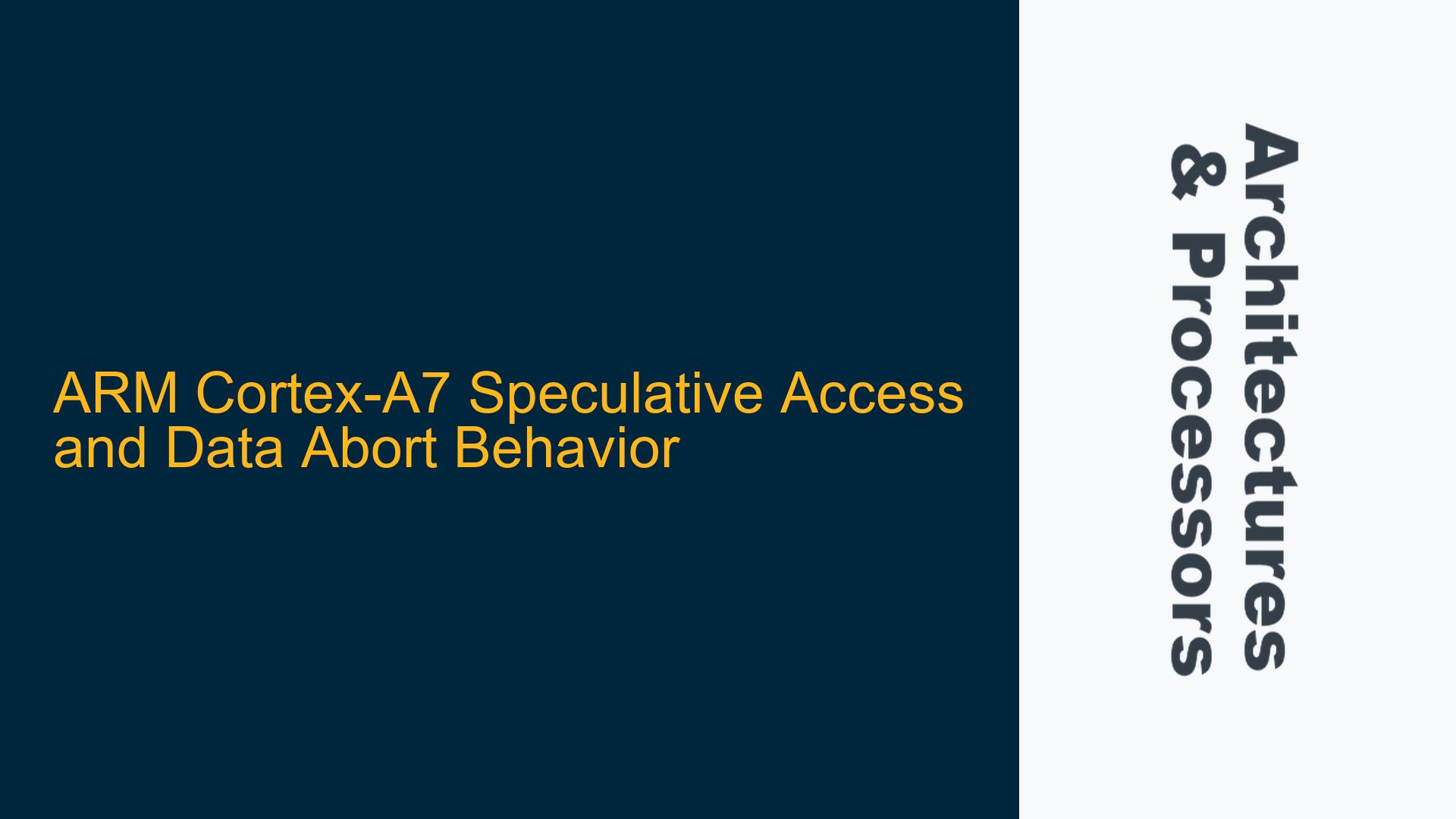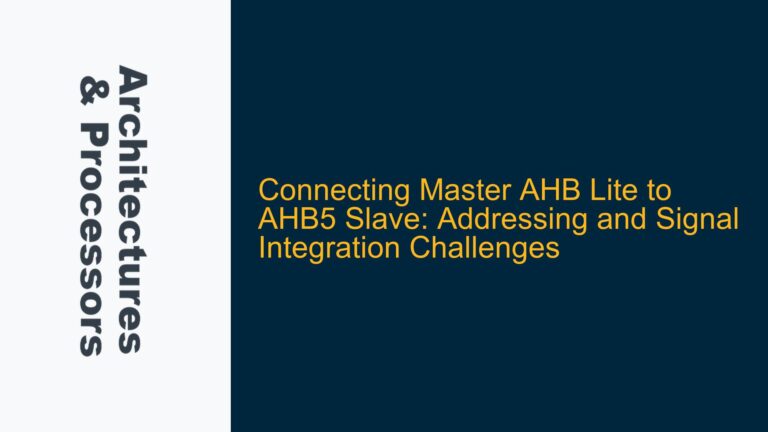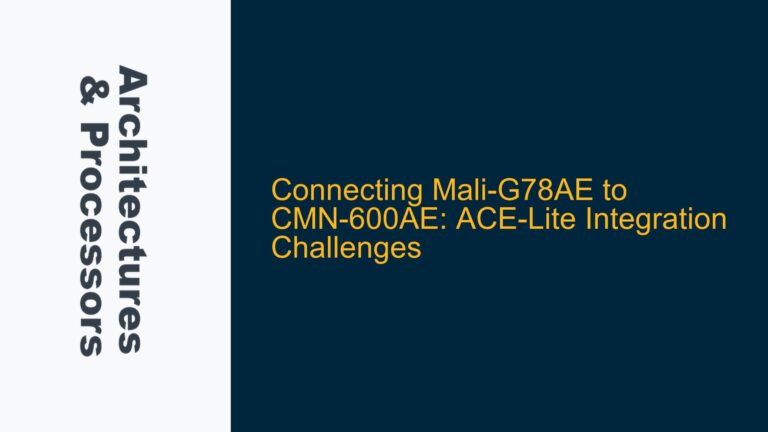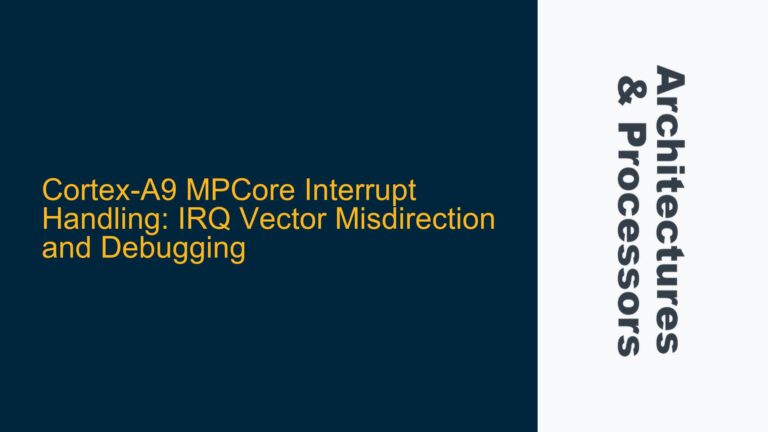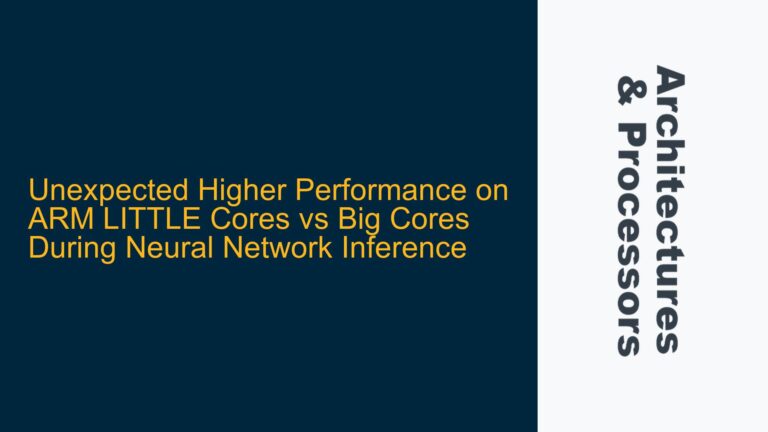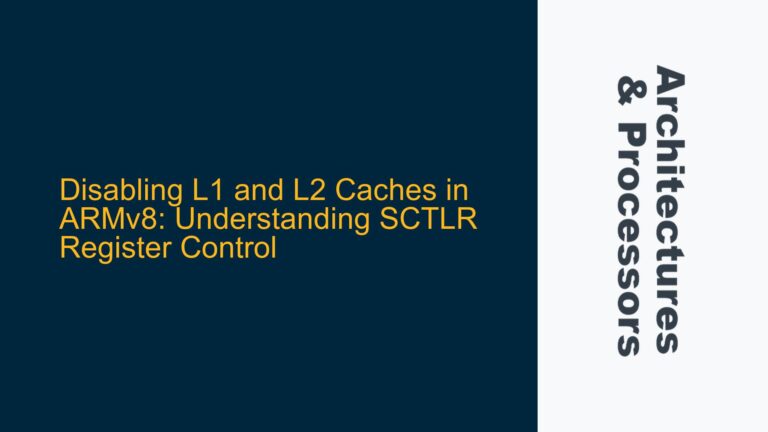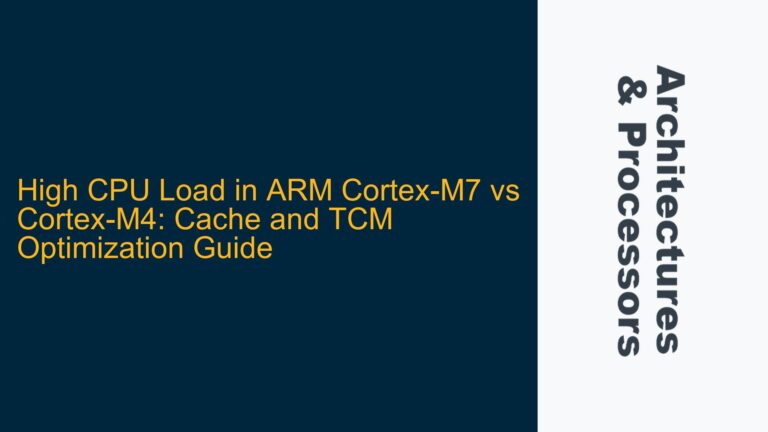Speculative Access in ARM Cortex-A7: Instruction Fetch vs. Data Access
The ARM Cortex-A7 processor, a member of the ARMv7-A architecture family, is designed to optimize performance through techniques such as speculative execution. Speculative execution is a mechanism where the processor predicts the outcome of certain operations, such as branch instructions, and executes instructions ahead of time to reduce latency. However, speculative execution can lead to complex interactions with the memory subsystem, particularly when unmapped or invalid memory addresses are accessed. This post delves into the behavior of the Cortex-A7 when it encounters speculative accesses, focusing on whether such accesses can trigger data aborts and how the processor handles these scenarios.
The Cortex-A7 is known to perform speculative instruction fetches, but it does not perform speculative data accesses. This distinction is critical because it directly impacts how the processor handles memory access violations. When an instruction fetch targets an unmapped or invalid memory address, the processor may still proceed with the fetch, but the outcome depends on whether the access is speculative or non-speculative. Understanding this behavior is essential for developers working on low-level firmware or operating systems, as it influences how memory management units (MMUs) and exception handling mechanisms are implemented.
In the context of the provided example, the instruction str x1, [0xd0010000] involves a store operation to a memory address that is not mapped to a physical address. The question arises: if the Cortex-A7 speculatively accesses this address, will it trigger a data abort? Furthermore, if a data abort occurs, what is the state of the program counter (PC) at the time of the abort? These questions are central to understanding the interaction between speculative execution and memory management in the Cortex-A7.
Cortex-A7 Speculative Instruction Fetch and Data Abort Scenarios
To understand whether speculative accesses can trigger data aborts, it is necessary to examine the Cortex-A7’s pipeline architecture and its handling of speculative execution. The Cortex-A7 employs an in-order pipeline with limited speculative capabilities. Specifically, it performs speculative instruction fetches but does not perform speculative data accesses. This means that while the processor may fetch instructions ahead of time based on branch prediction, it does not execute load or store operations speculatively.
In the case of speculative instruction fetches, the processor fetches instructions into the pipeline but does not commit their results until the branch prediction is resolved. If the prediction is incorrect, the speculatively fetched instructions are discarded, and the pipeline is flushed. This behavior ensures that speculative instruction fetches do not have side effects, such as triggering data aborts, because the instructions are not executed unless the prediction is correct.
However, the situation is different for data accesses. The Cortex-A7 does not perform speculative data accesses, meaning that load and store operations are only executed when they are non-speculative. If a data access targets an unmapped or invalid memory address, the processor will trigger a data abort as part of the normal execution flow. This behavior is consistent with the ARM architecture’s exception model, which mandates that invalid memory accesses result in data aborts.
In the provided example, the instruction str x1, [0xd0010000] is a store operation that targets an unmapped memory address. Since the Cortex-A7 does not perform speculative data accesses, this instruction will only be executed when it is non-speculative. If the address 0xd0010000 is unmapped, the processor will trigger a data abort when the instruction is executed. The program counter (PC) at the time of the abort will point to the instruction that caused the abort, which in this case is str x1, [0xd0010000].
Handling Speculative Execution and Data Aborts in Cortex-A7 Firmware
Developers working with the Cortex-A7 must be aware of the processor’s speculative execution behavior and its implications for memory management. While the Cortex-A7 does not perform speculative data accesses, it is still possible for speculative instruction fetches to interact with the memory subsystem in ways that can affect system behavior. For example, if a speculative instruction fetch targets an unmapped memory address, the fetch may still proceed, but the instruction will not be executed unless the branch prediction is correct.
To mitigate potential issues related to speculative execution, developers should ensure that their firmware or operating system properly handles data aborts and other exceptions. This includes implementing robust exception handlers that can recover from data aborts and other memory-related exceptions. Additionally, developers should carefully manage the memory map to ensure that all valid memory addresses are properly mapped and that invalid addresses are not accessed.
In the context of the provided example, the instruction str x1, [0xd0010000] should only be executed if the address 0xd0010000 is mapped to a valid physical address. If the address is unmapped, the processor will trigger a data abort, and the exception handler must handle the abort appropriately. This may involve logging the error, terminating the offending process, or taking other corrective actions.
In summary, the ARM Cortex-A7’s speculative execution behavior is limited to instruction fetches and does not extend to data accesses. As a result, speculative data accesses cannot trigger data aborts. However, developers must still be mindful of the processor’s speculative instruction fetch behavior and ensure that their firmware or operating system is designed to handle data aborts and other exceptions correctly. By understanding the Cortex-A7’s speculative execution behavior and its interaction with the memory subsystem, developers can create more robust and reliable systems.
